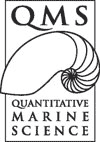
57th Annual Tuna Conference
Lake Arrowhead , California , May 22-25, 2006
What do large pelagics want? The motivations for migration.
Summary
The Meeting was informal and relatively small – with about 100 delegates and approximately 40 x 20 minute presentations over 4 days. The overall benefit of this conference to me was to meet with many of the foremost investigators in this field and talk with them with respect to their current research and to listen to their opinions with respect to my talk. It was very informative and valuable to me.
The talks and interests of the delegates broadly covered the physiology and behaviour of tunas and related animals (such as billfish, marine mammals and turtles) for about 50% of the time and the other 50% related to politics and social considerations of the management of fisheries and the marine environment. Given the fact that these types of fish range over very large distances, the management of the fisheries has unique challenges. A high proportion of the delegates appeared to work with, or directly for, the various tuna and billfish management agencies across the Pacific. There was only American involvement for the Northern Hemisphere/Atlantic fisheries. There was little or no European involvement – which surprised me due to the active Mediterranean farming and fishing industry.
With respect to my target interest of modelling fish movements; my general impression is that there is a great deal more effort and attention put into measurement of movements rather than the theoretical aspects of motivation for movement. The science appears more concerned with the quantity of data rather than the analysis of data with respect to the design of new observations. The technique that appeared to be most in vogue was archival tagging. However, even with an enormous volume of data, along with more complex and apparently accurate ways of determining position, there appeared to be comparatively little speculation with respect to the motivations of the fish for making movements, with the exception of Barbara Block. The only other modellers to present were describing results derived from the extremely complex SYPODYM model of yellowfin tuna in the Pacific. This massive modelling approach is interesting to me; mainly as an example of the obfuscation and complexity that it is possible to develop if models are not tightly focused and quickly built. There was very little conversation or interest in the output of these massive models – most people appeared confused. This was beneficial for me to know because, for instance if the alternative had been the case, I may have had to revise my opinion as to the value of investing time is this type of model. The response to my own talk, which was highly speculative and included simple and abstract models, appeared to generate interest, promote discussion and encourage knowledgeable people to speculate about how to design experiments to test the theories that have been suggested. This has inspired me to continue with this approach which is a major benefit to me.
There was some very interesting discussion with respect to the meaning of ecosystem based management and how scientists should work within the political environment. This was related to discussion with respect to the legal and social consequences of fisheries management but was not well informed or particularly detailed.